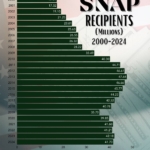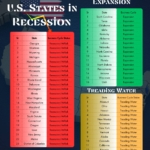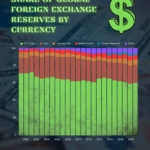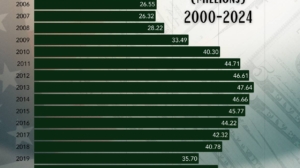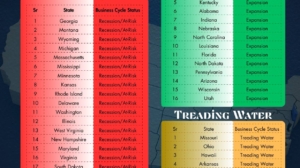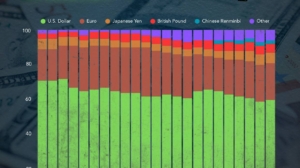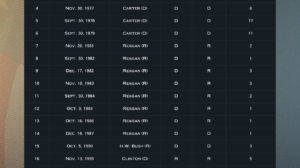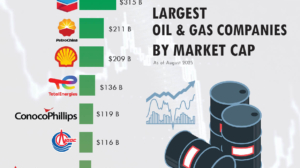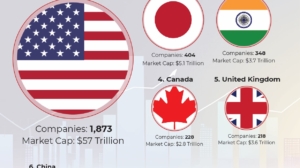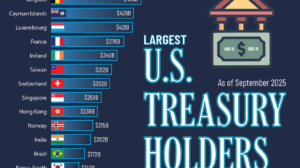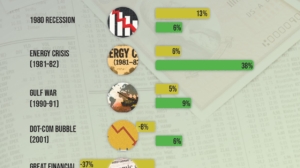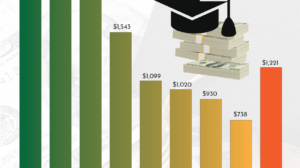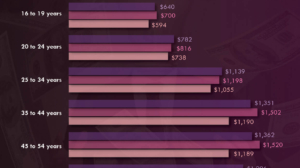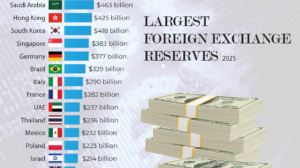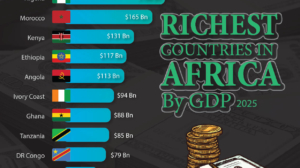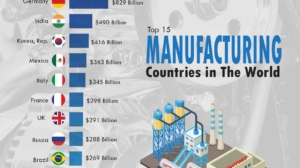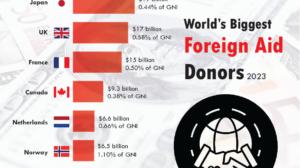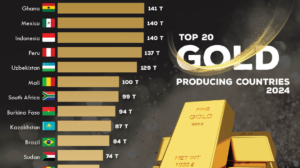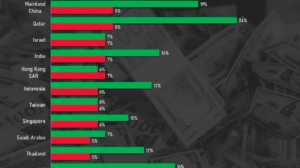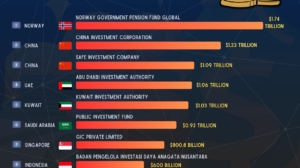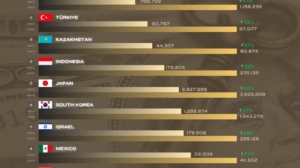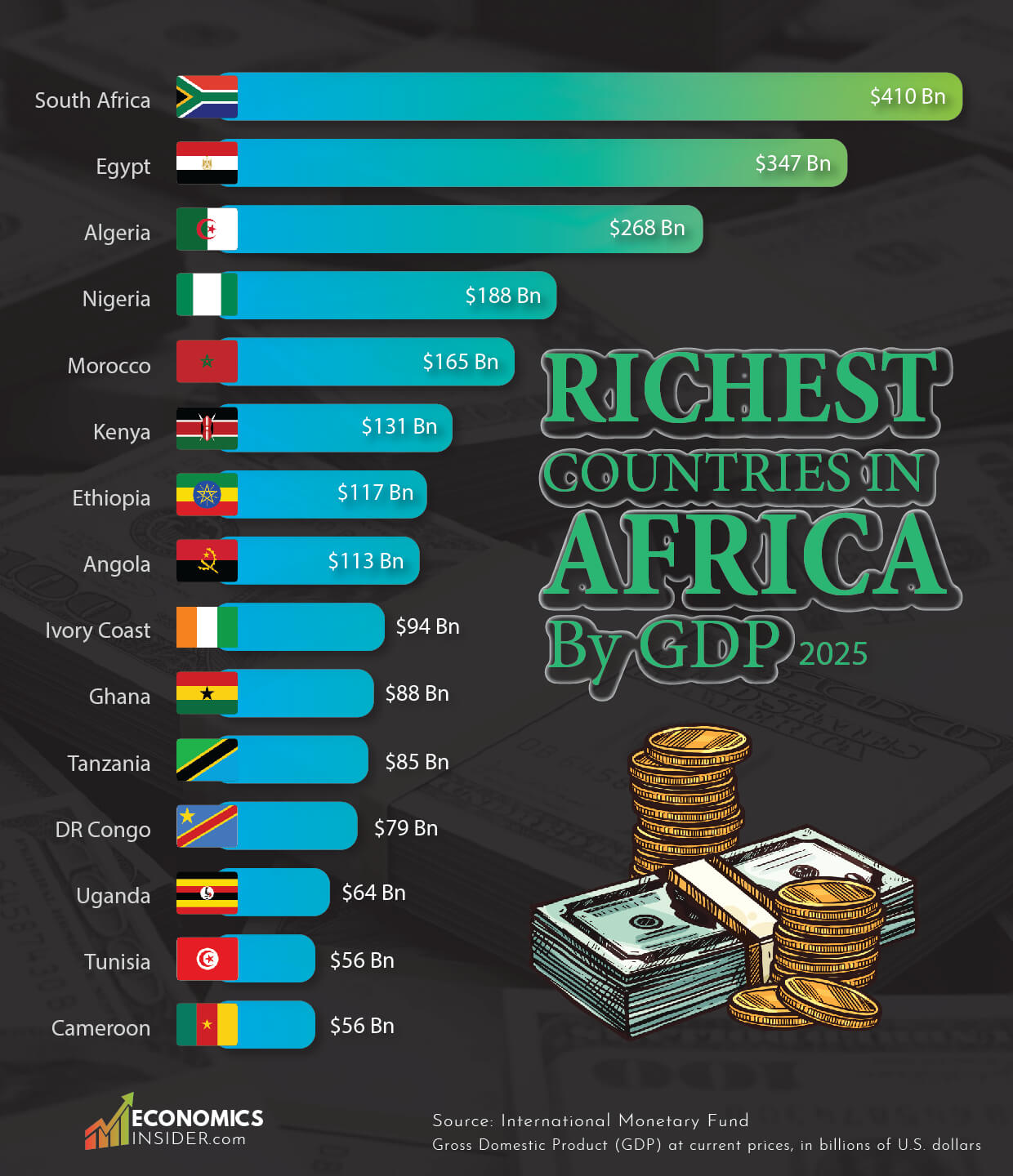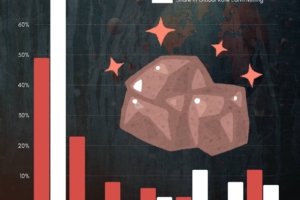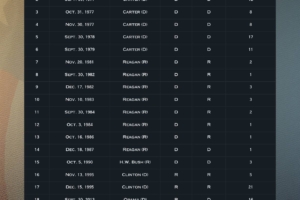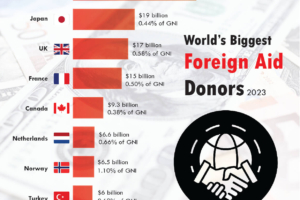Africa is made up of 54 nations with a combined population of over 1.4 billion people. Together, these countries produce goods and services worth about $2.85 trillion every year. However, the wealth in Africa is not distributed uniformly across the continent. The majority of Africa’s total GDP comes from only a handful of countries. The top ten economies, with South Africa, Egypt, Algeria, Nigeria, and Morocco among them, collectively generate more than 65% of Africa’s overall economic output.
South Africa is the largest contributor, accounting for approximately 14% of Africa’s economy, followed closely by Egypt at approximately 12%. Together, these two nations represent more than a quarter of the continent’s total economic output, making them the richest countries in Africa in terms of GDP.
Key Takeaways
- The top ten richest countries in Africa combined output almost $2 trillion, which accounts for roughly 68% of the entire economy of the continent.
- South Africa is the largest economy in Africa, followed by Egypt, Algeria, and Nigeria. All these four nations account for over 40% of all the goods and services produced on the continent.
- The richest countries in Africa are largely found in North Africa (Egypt, Algeria, Morocco) and Southern Africa (South Africa, Angola).
Richest Countries in Africa By GDP
The following table shows the richest countries in Africa, including their GDP and percentage of the total economy of the continent.
| Rank | Country | GDP (USD) | Share of Africa’s GDP |
|---|---|---|---|
| 1 | 🇿🇦 South Africa | $410.34 Bn | 14.41% |
| 2 | 🇪🇬 Egypt | $347.34 Bn | 12.20% |
| 3 | 🇩🇿 Algeria | $268.88 Bn | 9.44% |
| 4 | 🇳🇬 Nigeria | $188.27 Bn | 6.61% |
| 5 | 🇲🇦 Morocco | $165.84 Bn | 5.82% |
| 6 | 🇰🇪 Kenya | $131.67 Bn | 4.62% |
| 7 | 🇪🇹 Ethiopia | $117.46 Bn | 4.13% |
| 8 | 🇦🇴 Angola | $113.34 Bn | 3.98% |
| 9 | 🇨🇮 Ivory Coast | $94.48 Bn | 3.32% |
| 10 | 🇬🇭 Ghana | $88.33 Bn | 3.10% |
| 11 | 🇹🇿 Tanzania | $85.98 Bn | 3.02% |
| 12 | 🇨🇩 DR Congo | $79.12 Bn | 2.78% |
| 13 | 🇺🇬 Uganda | $64.28 Bn | 2.26% |
| 14 | 🇹🇳 Tunisia | $56.29 Bn | 1.98% |
| 15 | 🇨🇲 Cameroon | $56.01 Bn | 1.97% |
| 16 | 🇱🇾 Libya | $47.48 Bn | 1.67% |
| 17 | 🇿🇼 Zimbabwe | $38.17 Bn | 1.34% |
| 18 | 🇸🇳 Senegal | $34.73 Bn | 1.22% |
| 19 | 🇸🇩 Sudan | $31.51 Bn | 1.11% |
| 20 | 🇬🇳 Guinea | $30.09 Bn | 1.06% |
| 21 | 🇿🇲 Zambia | $28.91 Bn | 1.02% |
| 22 | 🇧🇫 Burkina Faso | $27.06 Bn | 0.95% |
| 23 | 🇲🇿 Mozambique | $23.77 Bn | 0.83% |
| 24 | 🇲🇱 Mali | $23.21 Bn | 0.82% |
| 25 | 🇧🇯 Benin | $22.24 Bn | 0.78% |
| 26 | 🇳🇪 Niger | $21.87 Bn | 0.77% |
| 27 | 🇬🇦 Gabon | $20.39 Bn | 0.72% |
| 28 | 🇧🇼 Botswana | $19.40 Bn | 0.68% |
| 29 | 🇹🇩 Chad | $18.79 Bn | 0.66% |
| 30 | 🇲🇬 Madagascar | $18.71 Bn | 0.66% |
| 31 | 🇲🇺 Mauritius | $15.49 Bn | 0.54% |
| 32 | 🇨🇬 Republic of the Congo | $15.28 Bn | 0.54% |
| 33 | 🇷🇼 Rwanda | $14.77 Bn | 0.52% |
| 34 | 🇳🇦 Namibia | $14.21 Bn | 0.50% |
| 35 | 🇲🇼 Malawi | $13.96 Bn | 0.49% |
| 36 | 🇸🇴 Somalia | $12.99 Bn | 0.46% |
| 37 | 🇬🇶 Equatorial Guinea | $12.68 Bn | 0.45% |
| 38 | 🇲🇷 Mauritania | $11.47 Bn | 0.40% |
| 39 | 🇹🇬 Togo | $10.02 Bn | 0.35% |
| 40 | 🇸🇱 Sierra Leone | $8.39 Bn | 0.29% |
| 41 | 🇧🇮 Burundi | $6.75 Bn | 0.24% |
| 42 | 🇸🇿 Eswatini | $5.48 Bn | 0.19% |
| 43 | 🇱🇷 Liberia | $5.17 Bn | 0.18% |
| 44 | 🇩🇯 Djibouti | $4.59 Bn | 0.16% |
| 45 | 🇸🇸 South Sudan | $4.00 Bn | 0.14% |
| 46 | 🇨🇫 Central African Republic | $2.93 Bn | 0.10% |
| 47 | 🇨🇻 Cape Verde | $2.79 Bn | 0.10% |
| 48 | 🇬🇲 Gambia | $2.77 Bn | 0.10% |
| 49 | 🇱🇸 Lesotho | $2.40 Bn | 0.08% |
| 50 | 🇬🇼 Guinea-Bissau | $2.27 Bn | 0.08% |
| 51 | 🇸🇨 Seychelles | $2.20 Bn | 0.08% |
| 52 | 🇰🇲 Comoros | $1.55 Bn | 0.05% |
| 53 | 🇸🇹 Sao Tome and Principe | $864 Mn | 0.03% |
| 54 | 🇪🇷 Eritrea | $0 | — |
| Average | — | $52.72 Bn | 100% |
Source: International Monetary Fund
Gross Domestic Product (GDP) at current prices, in billions of U.S. dollars
🇿🇦 South Africa
South Africa is globally recognized to be the richest nation in Africa in terms of GDP. Most of its wealth comes from its rich mineral resources including gold, platinum, diamonds, coal, and iron ore. These resources made it a world mining powerhouse for the past century.
Over time, South Africa used this resource base to build healthy manufacturing, service, and financial sectors. Johannesburg and Cape Town emerged as key business hubs in the country and its stock exchange (JSE) are among Africa’s biggest.
However, the path hasn’t been easy. Today, South Africa faces serious problems. Its unemployment level is among the world’s highest — in Q2 2025, it hit about 33%, and youth between 15 and 24 years old registered over 62% rates. Most people have either very little or no steady job.
Despite South Africa’s contribution of more than 14% to Africa’s GDP, most of its population remains poor. According to the World Bank, more than two-thirds of South Africans are living below the poverty line, and most of them do not have access to good education, health, and decent homes.
Top 10 Poorest Countries in The World 2025
🇪🇬 Egypt
Egypt is the second richest nation in Africa. Historically, the Nile River civilization, trade routes, and its geographical location that connects Africa, Asia, and Europe have provided Egypt with economic benefits. In recent times, Egypt has established a mixed economy with agriculture, industry, and services.
Key sectors of Egypt’s economy are tourism, manufacturing, and energy. The Suez Canal is one of Egypt’s biggest sources of income, as it collects trade fees from ships moving between the Mediterranean Sea and the Red Sea.
Recently, Egypt implemented structural reforms as part of “Egypt Vision 2030” and IMF agreements. It floated its currency, cut subsidies, and promoted private investment. These reforms have contributed to a better external account of the country: its current account deficit in mid-2025 decreased to $2.2 billion with more remittances and tourism.
Egypt’s inflation, which had climbed extremely high in recent years, has begun to recede. Prices in cities increased by around 11.7% in September 2025, which remains high but lower than previously. Despite this progress, the nation is confronted with large challenges like excessive government debt, expensive subsidy regimes, and the necessity to ensure that economic growth actually improves the daily lives of regular Egyptians.
🇩🇿 Algeria
Algeria’s prosperity has been weighted very much on oil and natural gas. It is among Africa’s top energy exporters. Hydrocarbon revenue finances the government, infrastructure, and social programs.
Historically, Algeria nationalized many resource sectors after independence. The state has invested in city infrastructure, housing, and social services. However, economic diversification has been slow. Bureaucracy, unemployment (particularly among youths), and insufficient incentives for private enterprise hinder growth. Nevertheless, with almost 10% of African GDP, Algeria is one of Africa’s wealthiest nations and an important country in North Africa.
🇳🇬 Nigeria
Nigeria is the most populous country in Africa, and that alone gives it a significant economic presence. Its exports of crude oil and natural gas generate much of its export revenue, and Nigeria frequently gets described as an “oil giant.” But there’s more to that story — Nigeria also has a rapidly expanding tech and services industry. The Lagos city alone contributes roughly 30% of Nigeria’s GDP even though it possesses only about 10% of Nigeria’s population.
Despite this size and potential, Nigeria’s economy struggles profoundly. Corruption is rampant, which makes it difficult for businesses to succeed. Its infrastructure — roads, electricity, water — is poor in most areas. The national currency (the naira) tends to devalue, which makes imports expensive and hurts people’s buying power. Millions of Nigerians remain under the poverty line, and per capita income is far less than the national GDP might indicate.
Recently, the country’s economy has been recovering: in the second quarter of 2025, Nigeria’s economy expanded by approximately 4.23% year-on-year, led by oil, industry, and agriculture.
🇲🇦 Morocco
Morocco has established a more diversified economy than most countries in Africa. Agriculture accounts for roughly 15% of its GDP, and almost half of Morocco’s workforce—roughly 45%—are employed in agriculture, fishing, or forestry. (https://www.trade.gov/country-commercial-guides/morocco-agricultural-sector). In addition to agriculture, Morocco has a strong mining sector, especially in phosphates. Morocco possesses roughly 75% of the world’s phosphate deposits.
Morocco has also heavily invested in clean energy over the past few years. About 44% of electricity is now generated from solar, wind, and hydro renewable resources, and it aims to increase that to 52% by 2030. Morocco has constructed large solar projects like the well-known Noor complex and large-scale wind farms to facilitate the development of renewable energy.
Due to its proximity to Europe, Morocco is a robust trading partner with European nations. Modern highways, ports, and railway lines have been constructed by the government to facilitate trade. Through these investments, Morocco can export fruits, vegetables, textiles, and phosphates more effectively.
Still the country is facing lots of challenges and not everyone feels the benefits equally in Morocco. Many young people are unemployed, and gaps between city and countryside are large. Although services are expanding, income inequalities and access to quality services (such as health or education) are still an issue.
🇰🇪 Kenya
Kenya is East Africa’s largest economy. The nation exports tea, coffee and flowers all over the globe. Nairobi, the nation’s capital, is becoming a hub for business and banking in the region. Kenya is particularly renowned for M-Pesa, a mobile-money system that allows individuals to use their phones to send, receive, and hold money.
However, Kenya also has very serious challenges. The public debt is increasing and there is deep income inequality. Urban areas always receive more resources than rural areas. And climate change also impacts agriculture which makes it difficult for farmers to plant and harvest. Nevertheless, Kenya accounts for around 4.6% of Africa’s GDP and is the sixth largest economy in Africa.
Top 10 Countries With Highest Income Inequality in 2025
🇪🇹 Ethiopia
Ethiopia’s economy has been expanding quickly in recent years. Ethiopia has heavily invested in major infrastructure projects—such as the Grand Ethiopian Renaissance Dam (GERD), which provides thousands of megawatts of power, powering homes, factories, and even exporting electricity. It also constructed the Addis Ababa-Djibouti railway, transporting huge volumes of freight, and established numerous industrial parks to attract manufacturing and enterprise.
At the same time, Ethiopia faces serious problems. There has been political unrest and conflict (for example in Tigray, Amhara, and other regions) that damaged farms, infrastructure, and disrupted normal life. Everyday commodities have become more costly because of inflation, and debt has grown as the government is borrowing to finance projects and emergencies.
In spite of all this, Ethiopia has great potential: it is the second most populous nation in Africa (behind Nigeria), with approximately 135 million people, which translates to having a huge consumer base and workforce.
🇦🇴 Angola
Angola’s prosperity relies heavily on oil. After many years of civil war, the country rebuilt itself mainly by exporting crude oil. In 2024, Angola received some $36.2 billion in oil exports, which accounted for approximately 85.6% of its export earnings. This means almost all of its money from selling things abroad comes from oil.
Due to this heavy reliance on oil export, Angola becomes wealthy when oil prices are high and suffers terribly when prices drop. The government has attempted gradually to develop other sectors of the economy—such as agriculture, fishing, mining, and services—but that transformation has been gradual and difficult.
Owing to a high income inequality, many in Angola do not experience the oil wealth. A significant portion of the population are living in poverty, and basic facilities such as health, education, and clean water are not uniformly accessible. Despite that, Angola is among the wealthiest nations in Africa and rank 8th in terms of overall GDP.
🇨🇮 Ivory Coast
Ivory Coast is the world’s biggest exporter of cocoa beans, and ag contributes much of its economy. About 40% of the country’s export income comes from cocoa, and many farmers grow coffee, cashews, and other crops too. This strong agricultural base gives Ivory Coast a steady flow of money from abroad. At the same time, the country has been improving services and building some industry, so it isn’t just selling raw crops.
Despite good progress, Ivory Coast has many challenges. International prices for cocoa can fluctuate up and down, so farmers sometimes receive good pay and sometimes hardly anything. Also, weather conditions—such as drought and unpredictable rains—can lower crops yield. Nevertheless, in comparison to some of its neighbors with greater conflict or instability, Ivory Coast has remained quite stable politically and economically. With approximately 3.3% of Africa’s GDP, it has a big influence on the economy of West Africa.
🇬🇭 Ghana
Ghana’s economy derives the majority of its income from cocoa, gold, and oil. Ghana is also politically stable compared to most other countries in Africa. Ghana has experienced severe economic issues. The nation is also experiencing a high inflation rate that increases the price of everyday items such as food, fuel, and accommodation for common citizens. The national currency, the cedi, has depreciated against hard currencies, thus increasing the price of imports and lowering the purchasing power of citizens.
Ghana’s government borrowed extensively, which resulted in rising debt, and subsequently it had to cooperate with institutions such as the International Monetary Fund (IMF) in order to stabilize. Even with only a fraction of just over 3% of Africa’s GDP, Ghana is still one of the richest countries in Africa by GDP.
How Global Poverty Has Changed Over the Last 15 Years (2010-2024)
Why Africa Is the Poorest Region in the World
Although we speak of the richest countries in Africa, the continent as a whole remains the world’s poorest region based on average income per capita. This means that, on average, people in Africa earn far less than those in other parts of the world.
To understand the gap, Africa’s combined economy is approximately $2.85 trillion, whereas the United States alone generates around $30 trillion and China around $19 trillion annually. In short, the whole continent of Africa — with 54 nations and more than a billion people — produces less than a tenth of what the U.S. economy generates. This vast disparity illustrates how much Africa’s economies have yet to develop to be comparable to the income of the great global powers.
Africa is poor due to some reasons which are closely interlinked. One, the population of the continent is increasing very rapidly, meaning the overall earnings (GDP) have to be divided among a huge number of people — so each individual receives less. African nations also rely heavily on natural resources such as oil, gas, gold, or cocoa. When international prices of these natural resources drop, their economies decline since they do not manufacture many other products.
Another significant issue is poor infrastructure. Many countries in africa still don’t have good roads, consistent electricity, quality medical care, and robust education systems, making it difficult for businesses to expand and for individuals to get decent jobs. On top of this, high debt and inflation compound the problem — governments tend to borrow extensively, and their currencies depreciate, increasing the cost of living.
Lastly, income inequality is also a huge concern in Africa. Even in the richest African countries, much of the wealth is held by a small group of people, while millions still live in poverty.
Africa’s Growth Potential
Despite setbacks, Africa is full of potential. Its youth, natural resources, and rapidly growing cities are the big drivers of its growth. New technology, renewable energy, and digital finance are opening up possibilities. The African Continental Free Trade Area (AfCFTA) initiative has the potential to make Africa more integrated and competitive in the world. Some projections indicate that the combined GDP of Africa could be $29 trillion by 2050.
Already, a number of African countries are among the world’s fastest-growing economies, because a lot of their potential remains untapped. For instance, Libya is forecast to increase by more than 17%, Senegal by 8.4%, and Guinea and Rwanda by around 7.1% in 2025.
Conclusion
Africa is home to more than 1.4 billion people, making it the second most populous continent in the world. More than two-thirds of the continent’s GDP is controlled by ten countries, with Algeria, Egypt, and South Africa in the lead. North and Southern Africa are the regional leaders, but East and West Africa are closing the gap. Meanwhile, Africa remains the poorest continent as a whole due to structural shortcomings such as inequality, dependence on commodities, and poor infrastructure.

